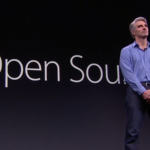Llama 3, social media giant Meta’s next-in-line open-source AI model is expected to rival OpenAI’s GPT 4 and is set to release in July this year, according to The Information’s sources.
Sources reveal that this upcoming model version will offer enhanced user interaction by offering contextual insights on complex subjects, rather than avoiding challenging inquiries. The goal would be to become a more responsive model overall.
In the development of its latest language model, Llama 3, Meta is reportedly enhancing the model’s ability to discern the context of words that may carry both benign and potentially harmful meanings, such as “kill.” This marks a shift from the strategy employed during the development of Llama 2, where Meta opted for a more conservative approach to ensure security and avert any public relations crises.
To further refine the quality of interactions facilitated by Llama 3, Meta is considering the appointment of a dedicated overseer for the model’s tone and safety protocols. This move aims to introduce a greater level of nuance in the model’s responses. Despite these efforts, The Information has noted a significant development: three prominent AI safety experts have exited Meta over the course of this month, hinting at possible challenges ahead in the tech giant’s pursuit of safer AI technologies.
It remains to be seen whether Llama 3 will continue to be only a language model, or will expand into the multimodal territory, being able to understand and generate using images and videos as well. The decision is reportedly yet to be made in this matter.
Llama 3 is expected to be twice as big as its predecessor, Llama 2, with more than 140 billion parameters. In contrast, Llama 2 maxes out at 70 billion parameters.
Yet, even with such a substantial increase, Llama 3’s parameter count would only represent a small fraction compared to the original GPT-4 Mixture-of-Experts model, which is equipped with 1.76 trillion parameters. The exact number of parameters in the GPT-4 models that power the current iteration of ChatGPT is not publicly disclosed but is presumed to be lower.
It’s important to note that the sheer number of parameters is no longer seen as the sole, nor the most crucial, indicator of an AI model’s potential output quality.






